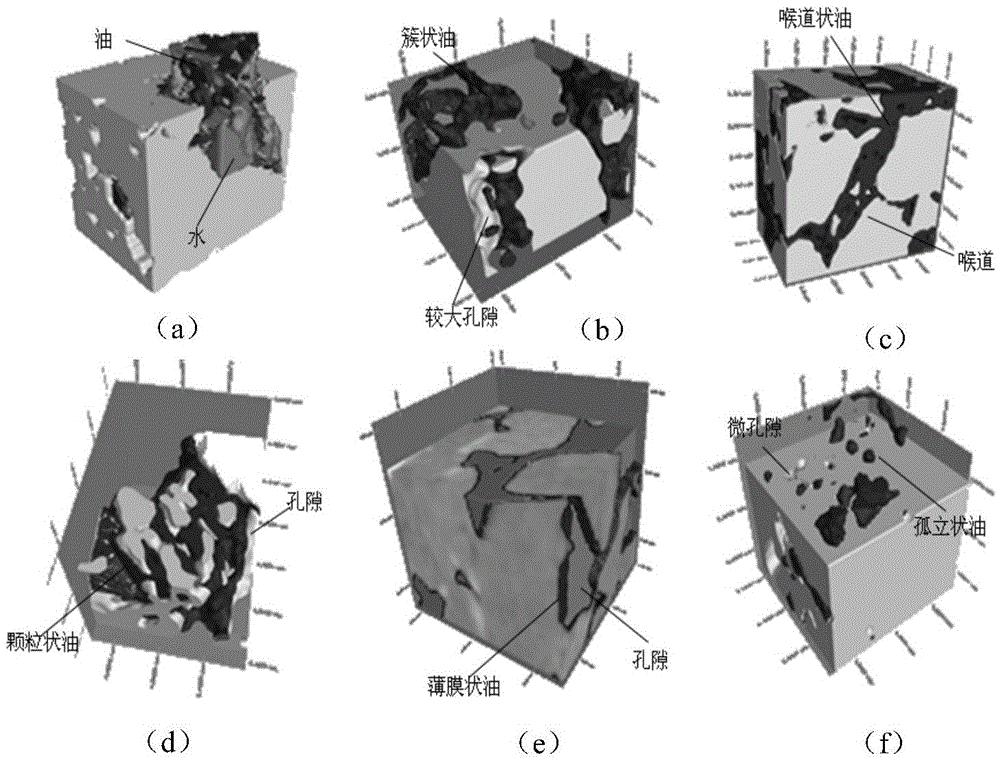Method for testing tight oil occurrence state of reservoir stratum through CT quantitative and three-dimensional visualization
A technology of occurrence state and tight oil, which is used in the field of 3D visualization to test the occurrence state of tight oil in reservoirs and quantitative CT to achieve the effect of high certainty
- Summary
- Abstract
- Description
- Claims
- Application Information
AI Technical Summary
Problems solved by technology
Method used
Image
Examples
Embodiment 1
[0037]Cores from the Chang 7 tight oil reservoir in the Ordos Basin were selected. The core must be closed and cored. Drill a short core column with a size of 0.3cm×1cm in the core; put the short core column into the melted wax slurry for sealing and wrapping, so as to prevent the tight oil and water in the core column from losing during the CT scanning process, but the wax layer The thickness should not exceed 1mm. After the core column is sealed with wax, a nano-CT non-destructive testing instrument is used to perform CT scanning on the core column, and a 360° two-dimensional slice image of the core column is obtained through the radiation emission of the X-ray tube, the rotation of the mechanical turntable, and the signal reception of the detector. The basic working principle is that after the ray is emitted from the ray tube and passes through the measured object, due to the relationship between the material, density and thickness of the measured object, the ray will have...
PUM
| Property | Measurement | Unit |
|---|---|---|
| Thickness | aaaaa | aaaaa |
Abstract
Description
Claims
Application Information
 Login to View More
Login to View More - R&D
- Intellectual Property
- Life Sciences
- Materials
- Tech Scout
- Unparalleled Data Quality
- Higher Quality Content
- 60% Fewer Hallucinations
Browse by: Latest US Patents, China's latest patents, Technical Efficacy Thesaurus, Application Domain, Technology Topic, Popular Technical Reports.
© 2025 PatSnap. All rights reserved.Legal|Privacy policy|Modern Slavery Act Transparency Statement|Sitemap|About US| Contact US: help@patsnap.com



